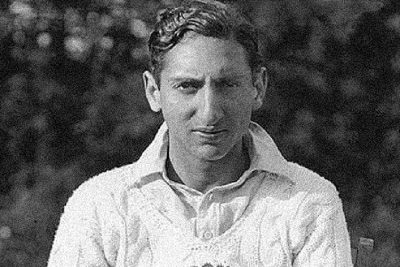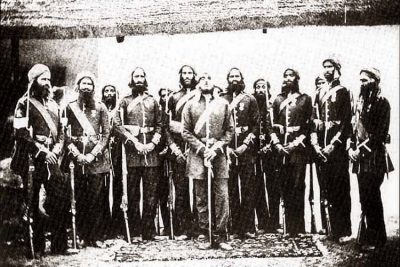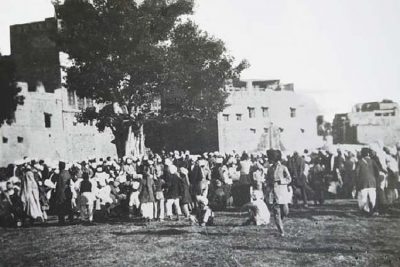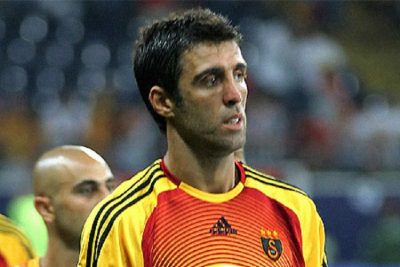The post Betty Robinson: How a Plane Crash Survivor Became the Fastest Woman of Her Time appeared first on .
]]>From catching trains to training for the Olympics

Betty Robinson. (Library of Congress)
Betty Robinson (or as folks would name her ‘the Babe’) was born as Elizabeth M. Robinson on 23rd August 1911 in Robinson, Illinois. Leading a quite generic all-American lifestyle, the turning point in her life was four months before the Amsterdam Olympics when she was trying to catch her local train to the Harvey High School. The assistant track coach of her school, Carlie Prince, saw her sprinting at her top speed and catching up to the train in no time, an impossible feat in his eyes. The very next day, he tests and times her speed around the school corridor and sets up a meet. She was perplexed and confused as she was not even aware that women could race as an athlete at that time. Three weeks later, her ‘meet’ turned out to be a competition between the members of the Illinois Athletic Club.
And she blew everyone away. Untrained and unprepared, Betty finished the race to a close 2nd, almost beating Helen Filkey, the fastest runner of the Club. She was offered to join the Illinois Athletic Club, and she eagerly agreed.
The next few months revealed her to be a powerhouse of talent. She was put through a gruelling regimen to further polish her nascent skills, made to run and caught her train over three times a week. She soon ran for the Olympic trials (the very first for her club) and broke records, even ending up as the finalist in the New Jersey. She nearly beat Etla Cartwright, the top runner from California.
The accident of Betty Robinson
Betty broke local, national and global records in Chicago, including the Amateur Athletic Union, until a stroke of ill-fate hit her. On June 29th 1931, Robinson was travelling with her cousin who recently earned his new pilot license and owned a biplane and sustained a major plane crash. The plane took a major nosedive from a height of 600 meters. Her injuries were very severe, including a broken left arm, mangled left leg, and an eight-inch gash across her forehead, and she instantly slipped into coma. Rescuers thought that she was dead. It was only when the undertaker realized that she was actually alive, that she was then taken to an infirmary in Oak Forest. Betty was in the hospital for three months. A lot of press outlets falsely declared her dead, owing to her long absence and serious injuries. The Evening American wrote,
“Lying almost paralyzed on a cot, Betty Robinson today fought to win the hardest race she ever ran – a race in which the Grim Reaper was pacing her.”
It took another three months before she could get off the wheelchair and another month to get off the crutches. She was not able to walk for the next two years and missed the 1932 Summer Olympics. Recovery didn’t make things any better as her injured leg was a one-half inch shorter than the other and she could barely move her knee to crouch.
However, Betty wanted to win at least another gold medal before she finally retired. During her trials for the 1936 Summer Olympics, she only managed to get the fifth of the six-position relay team. “The doctor said if I hadn’t been in such good condition I wouldn’t have come out of it as well as I did”, quoted Betty.
A fated win
On August 9th, 1936, the finalists of the 4 × 100 metres relay in the 1936 Summer Olympics (Germany), sprinted off to reach their ultimate goal, while Hitler sat on a high pavilion assured that the Germans would prove their physical superiority. The race was nearly at the end and the German team was on the verge of beating the US. An unfortunate incident, where Marie Dollinger dropped her last baton which got her disqualified. Though she broke the record of her sprinting, her mistake cost her the race.
And thus Betty won her gold medal.
Happily ever after?
Betty Robinson continued to make new records in the 50, 60, 70, and 100 yards, and after she retired, was inducted into the United States Track and Field Hall of Fame, and the Helms Hall of Fame, and decided to not to advertise or model. She later became an international coach, timer, traveller, motivational speaker and an advocate for female athleticism. Betty was also a spokesperson for organizations such as the Women’s Athletic Association and the Girl’s Athletic Association. She married Richard S. Schwartz in 1939 (a furniture artist) and had two kids: Richard and Jane.
We may remember her many triumphs of the past, but it is likely that she herself did not. Betty was battling cancer and Alzheimer’s disease for a very long time and eventually succumbed to it on 18th May 1999. She was 87 years old. In 1998, during Olympic memorabilia, Betty Robinson and Alfred Oerter Jr. were supposed to cut the rope together. Robinson, however, snipped the ribbon first. “I’m still the fastest”, she said- a statement that perhaps sums up her brilliant journey.
Enjoyed this article? Also, check out “The One-legged Runner Who Challenged Cancer: Terry Fox“
For more unusual stories & intriguing news follow STSTW Media on Instagram and Facebook. Also, join our live chat discussion on Twitter.
We welcome your contribution at [email protected]. Please include your name, city, state, and country.
Fact Analysis:
STSTW Media strives to deliver accurate information through careful research. However, things can go wrong. If you find the above article inaccurate or biased, please let us know at [email protected].
RELATED
The post Betty Robinson: How a Plane Crash Survivor Became the Fastest Woman of Her Time appeared first on .
]]>The post Iftikhar Ali Khan Pataudi – The Only Cricketer Who Played for Both England and India appeared first on .
]]>
Iftikhar Ali Khan Pataudi. (Wikimedia Commons)
Much is written about Mansoor Ali Khan Pataudi’s cricketing exploits, but not much is spoken of on his father Mohammad Iftikhar Ali Khan Siddiqui Pataudi. Iftikhar was one of the most talented batsmen who played cricket during the 1930s and 40s with much passion at all levels in England. Much later, he played Test cricket in India.
Sadly, the present generation has hardly heard about Iftikhar, the 8th Nawab of Pataudi. For those who don’t know him, Iftikhar happens to be the grandfather of Hindi film actor Saif Ali Khan, the 10th Nawab of Pataudi.
Iftikhar or the Nawab of Pataudi Sr. was the only Indian cricketer to have ever represented England and later British India in Test cricket during his short Test cricketing stint.
Before Iftikhar’s era
During and before Iftikhar’s era, cricket was the game of the royal families in England and British India. Kings, their princes and other elite people in England and British India used to spend their free time playing the game.
There were a couple of other Indian royals who had represented England in Test cricket before Iftikhar. They were the Jam Saheb of Nawanagar, KS Ranjitsinhji and his nephew KS Duleepsinhji. The first-class cricket tournaments in India, i.e. the Ranji Trophy and the Duleep Trophy, were named in the honour of the two.
Ranjitsinhji represented England in Test cricket
Ranjitsinhji represented England in Test cricket against Australia and played in first-class county cricket during the 1880s and 1890s. Ranjitsinhji never played Test cricket for India. Iftikhar was perhaps the first the only prince to have ever represented both England and India in Test cricket at different times.
Even as Iftikhar was busy playing first-class and Test cricket in England, his contemporary in India was another royal. He was the accidental player Lt. Col. Sir Pusapati Vijay Ananda Gajapathi Raju, the Maharajkumar of Vizianagram or simply Vizzy. Vizzy was a politician first, not-so-sought-after cricketer and a cricket administrator.
Iftikhar was born on May 16, 1910, in Pataudi, Punjab, British India. The Nawab, sometimes also known as IAK Pataudi, was the 8th Nawab of Pataudi. Today, however, the erstwhile and small princely state of Pataudi lies in the present-day state of Haryana.
Iftikhar related to great Urdu poet Mirza Ghalib
Iftikhar was born to Muhammad Ibrahim Ali Khan, the 7th Nawab of Pataudi and Shahar Bano Begum. He was related to well-known historical figures like the greatest Urdu poet Mirza Ghalib and Liaqat Ali Khan, Pakistan’s first prime minister.
During his schooling in India, Iftikhar learnt his basics in cricket from MG Slater, an Oxford University cricketer. Much later and during his early stay in England, Frank Woolley coached the promising lad. In Lahore, Iftikhar went to Chiefs’ College, which was later renamed Aitchison College.
The young Nawab arrived in Britain
In 1926-27, when the young Nawab arrived in Britain for further studies, he joined the Balliol College at Oxford University. While studying at Balliol College, he won the blues in both hockey and cricket for the University.
In 1932, Iftikhar qualified for the Worcestershire team. However, he played just three matches scoring only 65 runs in all the six innings. But in July 1932, he slaughtered Tich Freeman scoring 165 for the Gentlemen at Lord’s. His footwork was superb during the innings.
Iftikhar Ali Khan Pataudi played for England in the now infamous Bodyline series

Photograph of England cricket team 1932–33 where Iftikhar Ali Khan Pataudi can be seen in the back row, third person from the left. (Sydney Mail Special Photographer)
Following which, he bagged a place in the England Test team for the now infamous Bodyline 1932–33 Ashes series Down Under. The same year, Iftikhar was named the Wisden Cricketer of the Year. On his Test debut in Sydney, Iftikhar smashed a century (102) helping England win the Test by 10 wickets.
However, Iftikhar rubbed his captain Douglas Jardine on the wrong side by objecting to the bodyline tactics of Jardine and refused to move to his place in the leg-side field. Seeing this, Jardine is believed to have said His Highness is a conscientious objector.
The clash between Iftikhar and Jardine

Douglas Jardine. (Wikimedia Commons)
A peeved Jardine dropped the Nawab of Pataudi Sr. after the second Test in Melbourne on the pretext that he scored 15 and 5. Iftikhar never played in that series again. Some time by the end of the Bodyline tour, Iftikhar said of Jardine, “I am told he has his good points. In three months I have yet to see them.”
The year 1933 can be considered as the year of Iftikhar as it was the only full season of county cricket for him. In that year, batting spectacularly, Iftikhar plundered Tich Freeman at Worcester and smashed his way to two 200s. That year, he scored 1,749 runs and his average was 49.
In the same year, Iftikhar’s health broke down. He then managed to play just 10 games and recorded his career best batting average of 91.33.
Last played for England in June 1934
In June of 1934, Iftikhar played his third and last Test for England against Australia at Trent Bridge. As his health was failing him, he scored just 12 and 10 in his last appearance for England.
Between 1035 and 1938, the Nawab of Pataudi Sr. played just five times for Worcestershire.
Interestingly, even as he was playing Test cricket for England, the senior Nawab was being considered to lead India’s team in its first Test match against England at Lord’s in 1932. However, he withdrew his name from such a consideration.
Later in 1936, Iftikhar was in fact appointed the captain of the Indian team that was to tour of England. Sadly though, Iftikhar withdrew at the last moment on health grounds. It was during this period in 1939, that Iftikhar got married to Begum Sajida Sultan, second daughter of Hamidullah Khan, who was the last ruling Nawab of Bhopal.
He captained the India team during the tour to England in 1946
In 1946, however, he at last played for India. He captained the India team during the tour to England that year. On the tour, he scored just 55 runs in 5 Test innings with an average of 46.71.
His captaincy was also slammed. In spite of that in 1946/47, Iftikhar was named the Indian Cricketer of the Year. In 1948, when the princely state of Pataudi merged with independent India, Iftikhar worked with the Indian Foreign Office in Delhi.
Iftikhar died young while playing polo in Delhi
In 1952 Iftikhar planned to return to England county cricket and intended to play for Worcestershire. He, however, couldn’t as he died in Delhi following a heart attack while playing a polo match on January 5 that year. He was 41.
Iftikhar left behind his wife Sajida, three daughters and his son Mansoor Ali Khan, who was celebrating his 11th birthday. Iftikhar’s son, Mansoor, later known as Tiger, succeeded him as the 9th Nawab of Pataudi. Later, Tiger went on to serve Indian Test cricket as a successful captain. Bollywood actors Saif Ali Khan and Soha Ali Khan are Iftikhar’s grandchildren.
He was a hockey Olympian too
While writing in Frontline magazine, sportswriter Vijay Lokapally said Iftikhar was a hockey Olympian too. He then wrote that Tiger Pataudi is said to have missed his father’s guidance throughout his life.
In his racy autobiography titled ‘In Tiger’s Tale’, Tiger Pataudi spoke of his father as a man of very strong principles and a person who was used to having his own way. In addition to being a sportsman, Iftikhar Ali Khan was an accomplished speaker.
MCC commissioned the Pataudi Trophy in 2007
The Marylebone Cricket Club (MCC) is said to have commissioned a trophy in Pataudi’s name in 2007 and England and India were to compete for it in a Test series. This was in commemoration of the 75th anniversary of India’s Test debut.
Remembering Iftikhar in his titled ‘The story of Integration of Indian States’, senior Indian Civil Servant VP Menon said the Nawab was a great patriot who unfortunately died young.
To sum up, Iftikhar Ali Khan Pataudi did play a key role during the formative years of the game in India, i.e. in the 1930s and 1940s.
Enjoyed this article? Also, check out “Hakan Sukur – The Superstar Striker Exiled by Erdogan“.
Fact Analysis:
STSTW Media strives to deliver accurate information through careful research. However, things can go wrong. If you find the above article inaccurate or biased, please let us know at [email protected].
 Recommended Read:
Recommended Read:
Pataudi – Nawab Of Cricket | By Suresh Menon
Genre:
Non-fiction > Biography
RELATED
The post Iftikhar Ali Khan Pataudi – The Only Cricketer Who Played for Both England and India appeared first on .
]]>The post Hakan Sukur – The Superstar Striker Exiled by Erdogan appeared first on .
]]>
Hakan Sukur. (Vulkahn / Wikimedia Commons)
In the world of football, no-one in Turkey could handle the man who became known as the ‘Bull of the Bosporus’, a powerful, fast and instinctive footballer who broke records in both the domestic and international game. His influence skyrocketed and before long he had negotiated big-money moves abroad and started rubbing necks with the Turkish elite. He attempted to wield his status in the political world but when the bullish frontman went against the dominant politician of his country a power-struggled ensued and a player who was once hailed the hero of his nation transformed into a disgraced figure. This is the story of Hakan Sukur– a player who realised that the move from sport to politics is not for the faint-hearted.
For the most part, professional footballers lead amazing lives: earning substantial amounts of money, travelling around the world and experiencing the high-class lifestyle of different countries – all from playing their favourite sport. This is even more so the case for those who are considered star players, as they are no longer footballers but heroes among their communities. In turn, they experience extraordinary lives but not always in a positive manner due to the intense pressure it carries. With the weight of the nation thrust upon their shoulders some find it hard to stand tall.
Early career
One such case was a child prodigy born in Adapazari, within the northern Maramas region of Turkey. However, he expresses that his roots are Albanian, with his mother and father both emigrating from the former Yugoslavia. In a country extremely impassioned with football but left wanting on the world stage his rise was met with enhanced reverence. At 21 years old he joined one of the biggest teams in Turkey and well-known worldwide – Istanbul based Galatasaray SK – immediately becoming a fan’s favourite for his strike rate. He was gifted the name ‘Kral’ denoting King as he broke the scoring records of both Galatasaray and the Turkish national team. His other moniker being ‘Bull of the Bosporus’, illustrated his playing style. Turkey and Hakan went to the 2002 World Cup in Japan & South Korea as underdogs but with more than a hint of optimism. They finished 3rd which was branded a massive success. Despite Hakan Sukur being a periphery figure he was able to score the fastest goal in world cup history – after 10.8 seconds – in the third place playoff. It is a stat which illustrated his turbulent career; leaving his mark in the history books and further endearing himself to the Turks.
Life abroad
The reason the previous stat is illustrative of the Turk’s career is that he could only ever dominate on Turkish soil. Every time he went abroad he struggled immensely but always found a way to remain in the hearts of the Gala and Turkish faithful. The problems started in this aspect for Hakan Sukur when big money moves came calling for the marksman and with it only natural to want to play in one of the best leagues in the world (the Italian Seria A) his head was turned. Although many say that the powers that be – the football federation and politicians – forced him to leave to promote Turkish football. He ventured to Torino FC in a move that seemed to fit. (Even their nickname is Il Toro – The Bull). Alas, as the story goes, he became homesick in Turin and so everything he craved from Turkey was accommodated to cure this – even, a wife.
His wedding day

Tansu Çiller. (Ministry of the Presidency / Government of Spain)
This dalliance is severely clouded in terms of the actual facts but it is said when Hakan used to annually summer holiday with his family he met a girl called Esra Elbirlik. In Turin, Hakan stated he missed spending time with her and offered his hand in marriage which was rejected by the girl’s parents as she was only 19 years old and still at university. They would not refuse a second time. This is where a strange aspect of Hakan’s life began to reveal. His talent in the game brought him very close with a powerful individual, the then prime minister of Turkey, Tansu Çiller. She helped Hakan’s cause and persuaded the family to accept, all in order to keep her golden child and ambassador of the country – Sukur – content abroad. Another of the footballer’s new friends was named Recep Erdoğan, the now President of Turkey. Below is a picture of the wedding in which Erdoğan – who at the time was Mayor of Istanbul – and his right hand man, an influential Imam (similar to a cleric) Fethullah Gülen sit. The three powerful people supposedly made sure the wedding went ahead.

Recep Tayyip Erdoğan. (US Department of State)
Their now celebrity wedding was televised in a splendorous ceremony, performed by Erdoğan and Gülen, the latter who would act as Sukur’s best man. Yet, back in Italy, the strained relationship lasted only four months and Esra returned home. She was branded a thief by Sukur who accused her of stealing his jewellery. The last we heard of the girl was in 1999. She died in the Izmit Earthquake which took the lives of 17,000 people in and around Istanbul, aged only 24. Her parent’s lives were also claimed.
Later career
After only 1 goal, Hakan Sukur returned to Turkey within the year. Who knows what must have been going through his head but this failure abroad would be a common trend. After dominating again in the Turkish Süper Lig he was again tempted by another Italian Club – Milanese giants Inter Milan. Again, he would flop, struggling to oust rival strikers Christian Vieri and the Brazilian Ronaldo. He would try England as his last foray to foreign lands being signed by former Galatasaray manager Graeme Souness but scored just two times following a leg break. Every time he came back to Istanbul he continued where he left off scoring for fun, eventually winning 14 titles with Gala including their maiden European success – the 1999 UEFA Cup. With the Turkish national team, he retired with 51 goals in 112 games.
Life in politics

Fethullah Gülen. (VOA / Wikimedia Commons)
After his retirement he turned to politics, working for the AK Party (Justice and Development Party) – the one which Erdoğan still represents. To understand what happened we must understand the conflict between Erdoğan and Gülen – which is far from easy. At the time of Sukur’s employment, the Cleric Gülen was also a member of the AK Party, with hopes of turning Turkey back into a more Islamist state. Erdoğan and Gülen had a close and potent partnership. While the former worked his way up the political ladder, Gülen had amassed a wealth of power after privatisation, notably with many media companies. A schism came to a head in 2016 when a coup d’état was staged. Among it came a corruption scandal in which the AK Party themselves were accused of corruption – the President’s family also. Gülen – who was and remains based in the US – was deemed the figure behind it – a terrorist organisation called FETO. He was accused of trying to oust out his former ally Erdoğan. Gülen fervently denies this but many of his followers were arrested and his thought-schools shut down across the country. Hakan Sukur did not agree with this accusation and when asked to renounce Gülen, he refused. He was also quoted as calling himself Albanian and not Turkish which lost him support in an increasingly nationalist movement. He resigned from the AKP to start work as an independent MP.
Where is Hakan Sukur now?
Because of his actions, a warrant was put out for Hakan Sukur’s arrest. He escaped but his father Selmet did not get so lucky and was imprisoned. There are reports he has since died inside. Sukur was able to emigrate to the USA and has bizarrely opened a bakery in Palo Alto, California. Judging by the pictures of his lifestyle he has been more than able to retain some of his assets, staying in a 3 million dollar home with his current wife and 3 kids. There are also plans to make his bakery into a chain. It is fortunate for him, as a return to Turkey is simply not possible in this climate.
Final Note
There are many stories of people falling from grace in the history of the world. Sometimes it is deserved and sometimes not. This story certainly ranks high in terms of a fallen star but it is impossible to comment on whether it is justified. In a political sense, no person should be punished for their views the way Hakan was. In a human sense his relationship with Esra looks to be extremely badly-judged but only they will know the truth of what transpired. If we go by the many mantras of forgiveness, with a new family and new business to oversee we can only hope Hakan Sukur finds solace in the rest of his life, helped with a wonderful career to look back on.
Writer’s Note
The relationship between Hakan and Esra is extremely clouded with not many sources. Perhaps there are some Turkish readers who can tell us more, please let us know in the comments if so. Also, regarding Erdogan and the Gulen movement, it is a very delicate and complicated situation so we apologise if we have anything incorrect or biased.
Enjoyed this article? Also, check out “The Deadly Premonition of Sugar Ray Robinson that came True, 1947“.
Fact Analysis:
STSTW Media strives to deliver accurate information through careful research. However, things can go wrong. If you find the above article inaccurate or biased, please let us know at [email protected].
RELATED
The post Hakan Sukur – The Superstar Striker Exiled by Erdogan appeared first on .
]]>The post The Deadly Premonition of Sugar Ray Robinson that came True, 1947 appeared first on .
]]>
Sugar Ray Robinson in the year 1947. (ACME / Wikimedia Commons)
Sugar Ray Robinson is known as the greatest pound-for-pound boxer of all time, he won the middleweight champion five-times during his twenty-five years career from 1940 to 1965. Born with the name Walker Smith Jr on 3rd May 1921, he grew up in Harlem, New York. He once borrowed the identification card of another youngster named Ray Robinson which earned him the nickname Sugar Ray Robinson. He never used his real name since the nickname Sugar Ray Robinson stuck.
He was enrolled in the army during the Second World War and was mainly seen boxing with the then heavyweight champion Joe Louis during exhibition tours at military bases. Until 1943 Robinson maintained a perfect record, which included 29 knockouts.
He earned his first middleweight title in 1951 but lost the title after five months. He regained his title two months later with a dramatic knockout of his opponent. After another loss, he made an entry in the entertainment industry as a tap dancer and remained there for nearly two years before regaining the title in 1955 and retaining it until 1960 after which he never earned back the title.
He announced his retirement in 1965, setting a record of 173 wins from 200 fights and merely 19 losses. He was elected to the Boxing Hall of Fame in 1967. However, an incident in his early years painted a grim picture of the world of boxing.
Sugar Ray Robinson vs. Jimmy Doyle
Robinson won the welterweight title in 1946 against Tommy Bell. In his first title defence, he was scheduled to fight Jimmy Doyle on June 25, 1947. In the fight, Robinson dominated his opponent in six out of the first seven rounds and was on the receiving end in the sixth round of the match. However, in the eighth round, a brutal left hook floored Doyle, resulting in Robinson’s win over him by TKO, a knockout.
Doyle was immediately rushed to the hospital on a stretcher and was soon operated to remove a clot. But his injuries proved to be fatal and was declared dead due to a cerebral haemorrhage sometime later.
Robinson’s nightmare
Robinson visited his opponent in the hospital and famously remarked that he had dreamt of the incident; during a candid conversation with the reporters assembled at the hospital. “Jeez, this is awful. For three days I’ve been afraid that something like this would happen,” he reportedly said and explained that he had been staying over at a friend’s place when he dreamt that Doyle would succumb to his injuries from the blows he received.
Robinson indicated his uneasiness by asserting that he had trouble coping with the sight of Doyle lying on the canvas in the dream which seemed so real that he had cold sweats on waking up. Various reports later suggested that Robinson had decided to pull out of the fight because of his dream. But, the fight promoters refused to let him back out from the fight and tried several methods to convince Robinson. Finally, a priest was tasked with convincing Robinson that he had a bad dream and he should continue with the fight. Robinson reluctantly agreed to continue.
Investigation and aftermath
Questions over the fitness of deceased boxer, Doyle, surfaced and were subsequently quashed by The Cleveland Boxing Commission, who issued a report stating that he had been fit. The coroner, Dr. Samuel J. Gerber, reported that the blows he received to the jaw were fatal, along with evidence suggesting prior brain damage and a concussion.
It was revealed that Doyle received injuries in a prior fight with Babe McCoy in 1946 and he was asked not to fight anymore by his close aides. This incident proved to be a defining moment in Robinson’s career and the sport of boxing, as told by Robinson himself during the coroner’s inquest. Upon being asked if he intended to get Doyle “in trouble,” Robinson replied, “Mister, it’s my business to get him in trouble.”
It was later reported that Robinson had tried to help Doyle’s family by donating some amount of money through a trust fund after learning of Doyle’s attempts to buy his mother a house, in tune with a description of him as “pound for pound, the best.”
Enjoyed this article? Also, check out “The Time When Men Fought Bears“.
Recommended Read:
Pound for Pound: A Biography of Sugar Ray Robinson | By Herb Boyd & Ray Robinson
Recommended Watch:
The Greatest Boxer Ever Pound For Pound! | YouTube
Fact Analysis:
STSTW Media strives to deliver accurate information through careful research. However, things can go wrong. If you find the above article inaccurate or biased, please let us know at [email protected]
RELATED
The post The Deadly Premonition of Sugar Ray Robinson that came True, 1947 appeared first on .
]]>











